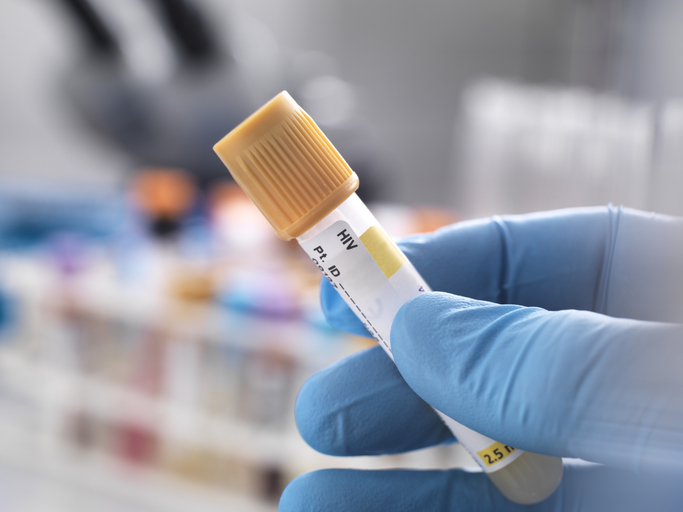Corporate Social Responsibility as a Competitive and Financial Catalyst: Walmart and Sam’s Club’s Philanthropy in Pediatric Healthcare – AInvest

Report on Corporate Social Responsibility and Sustainable Development Goal Alignment: Walmart and Sam’s Club
Introduction: A Partnership for Sustainable Development
This report analyzes the corporate social responsibility (CSR) initiatives of Walmart and Sam’s Club, specifically their “Spark Good. Change Kids’ Health.” campaign in partnership with Children’s Miracle Network Hospitals (CMN Hospitals). The initiative demonstrates a strong alignment with several United Nations Sustainable Development Goals (SDGs), primarily SDG 3 (Good Health and Well-being), SDG 8 (Decent Work and Economic Growth), and SDG 17 (Partnerships for the Goals). The 38-year partnership has become a strategic component of the company’s business model, contributing to brand equity, employee engagement, and shareholder value.
- Total Funds Raised: Over $1 billion
- 2025 Campaign Contribution: $43 million
- Funding Mechanism: Customer and member donations at checkout, online, and via the Walmart app.
Advancing SDG 3: Good Health and Well-being
The campaign’s primary objective is to fund pediatric healthcare, directly contributing to the targets of SDG 3. By channeling funds to local member hospitals of the CMN Hospitals network, the initiative ensures that contributions have a direct and tangible impact on community health infrastructure.
- Localized Healthcare Support: The commitment that all funds raised remain local strengthens community health systems and fosters trust, a critical factor in achieving universal health coverage goals.
- Enhanced Brand Loyalty: By aligning corporate activities with public health values, the companies build consumer trust. Academic research indicates that CSR initiatives focused on health and sustainability positively influence long-term consumer purchasing behavior.
- Community Engagement: The campaign humanizes its impact through patient stories, such as that of Gian, a three-year-old with Duchenne Muscular Dystrophy, reinforcing the connection between consumer donations and improved health outcomes for children.
Promoting SDG 8: Decent Work and Economic Growth
The initiative serves as a catalyst for employee engagement and development, which are central tenets of SDG 8. Walmart and Sam’s Club position their associates as active drivers of the campaign, fostering a sense of purpose that enhances job satisfaction and retention.
- Purpose-Driven Engagement: Associates are encouraged to share personal stories, such as Market Manager Dori’s experience with her son Gabe’s treatment, which cultivates a strong corporate culture and sense of shared mission.
- Investment in Human Capital: Sam’s Club’s Manager Quality (MQ) program, which provides customized leadership training, exemplifies the company’s commitment to associate development and creating opportunities for decent work.
- Economic Impact: Engaged employees function as brand advocates, amplifying the campaign’s reach and contributing to the company’s overall economic performance and sustainable growth.
Leveraging SDG 17: Partnerships for the Goals to Drive Shareholder Value
The long-standing collaboration between Walmart, Sam’s Club, and CMN Hospitals is a model for SDG 17, showcasing how cross-sector partnerships can achieve significant development outcomes while simultaneously driving business growth.
- Strategic Philanthropy as a Growth Driver: As outlined at the 2025 Investment Community Meeting, leadership views CSR initiatives not as a cost but as integral to reshaping the company’s profit mix and growing profits faster than sales.
- Reputation and Market Share: The campaign’s success strengthens the company’s reputation as a socially responsible entity, which can translate into premium pricing and increased market share, particularly among socially conscious Gen Z and millennial consumers.
- Innovation and Growth: The positive brand perception is complemented by digital innovations, such as Sam’s Club’s Scan & Go app, which have contributed to a 22% increase in membership over two years, demonstrating the synergy between CSR and financial performance.
Conclusion: An Integrated Model for Sustainable Growth
The “Spark Good. Change Kids’ Health.” campaign exemplifies an integrated business model where financial objectives are aligned with sustainable development principles. By embedding CSR into core operations, Walmart and Sam’s Club have created a virtuous cycle that benefits communities, employees, and shareholders, providing a replicable framework for achieving sustainable growth.
1. Which SDGs are addressed or connected to the issues highlighted in the article?
SDG 3: Good Health and Well-being
- The article’s central theme is Walmart and Sam’s Club’s “Spark Good. Change Kids’ Health.” campaign, which has raised over $1 billion for Children’s Miracle Network Hospitals (CMN Hospitals). This directly contributes to improving pediatric healthcare, which is a core component of ensuring healthy lives and promoting well-being for children. The article humanizes this impact with stories of children like Gian and Gabe receiving treatment for serious medical conditions.
SDG 8: Decent Work and Economic Growth
- The article connects the company’s philanthropic efforts to its internal operations, specifically employee engagement and development. It mentions Walmart’s investment in “associate wages” and Sam’s Club’s “Manager Quality (MQ) program” for leadership training. These initiatives aim to improve working conditions, foster employee retention, and create a sense of purpose, which aligns with the goal of promoting decent work.
SDG 17: Partnerships for the Goals
- The entire initiative described is built on a long-term, multi-stakeholder partnership. The article highlights the “38-year partnership” between private sector companies (Walmart and Sam’s Club) and a civil society organization (CMN Hospitals). This collaboration to mobilize resources and achieve a common social goal is a clear example of SDG 17, which encourages effective partnerships to achieve sustainable development.
2. What specific targets under those SDGs can be identified based on the article’s content?
Target 3.8: Achieve universal health coverage, including financial risk protection, access to quality essential health-care services…
- The campaign’s fundraising of over $1 billion directly supports access to quality pediatric healthcare services. By providing financial resources to hospitals, the initiative helps reduce the financial burden on families and ensures that children can receive necessary medical care, contributing to the goal of universal access to essential health services.
Target 8.5: By 2030, achieve full and productive employment and decent work for all…
- The article’s focus on employee engagement, retention, and development aligns with the “decent work” aspect of this target. The mention of investing in “associate wages” and leadership training programs like the MQ program demonstrates a commitment to improving the quality of employment for its workforce.
Target 17.17: Encourage and promote effective public, public-private and civil society partnerships…
- The 38-year collaboration between Walmart/Sam’s Club and CMN Hospitals is a direct embodiment of this target. The article showcases how a private-civil society partnership can effectively mobilize significant financial resources ($1 billion) and community engagement to address a critical social issue like pediatric health.
3. Are there any indicators mentioned or implied in the article that can be used to measure progress towards the identified targets?
Amount of funding mobilized for pediatric healthcare
- The article explicitly states that the campaign has raised “over $1 billion” cumulatively and “$43 million raised in 2025 alone.” This is a direct, quantifiable indicator of the financial resources mobilized to support Target 3.8 (access to quality healthcare).
Employee retention and engagement levels
- The article implies this indicator by stating that a sense of purpose from participating in the campaign is “vital for employee retention” and that “engaged employees reduce turnover.” While specific figures are not provided, it is presented as a key metric for the success of the company’s human-centric approach, relevant to Target 8.5.
Duration and scale of multi-stakeholder partnerships
- The “38-year partnership” is a specific indicator of the longevity and stability of the collaboration between the private sector and civil society. The scale is indicated by the nationwide reach of Walmart/Sam’s Club and CMN Hospitals, measuring progress towards Target 17.17.
4. Create a table with three columns titled ‘SDGs, Targets and Indicators” to present the findings from analyzing the article.
| SDGs | Targets | Indicators |
|---|---|---|
| SDG 3: Good Health and Well-being | Target 3.8: Achieve universal health coverage, including financial risk protection, access to quality essential health-care services… |
|
| SDG 8: Decent Work and Economic Growth | Target 8.5: By 2030, achieve full and productive employment and decent work for all… |
|
| SDG 17: Partnerships for the Goals | Target 17.17: Encourage and promote effective public, public-private and civil society partnerships… |
|
Source: ainvest.com

What is Your Reaction?
 Like
0
Like
0
 Dislike
0
Dislike
0
 Love
0
Love
0
 Funny
0
Funny
0
 Angry
0
Angry
0
 Sad
0
Sad
0
 Wow
0
Wow
0








































































